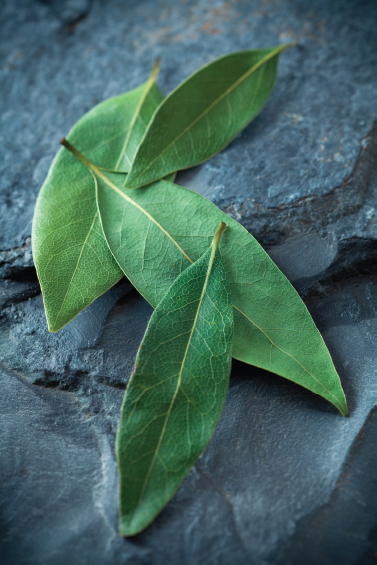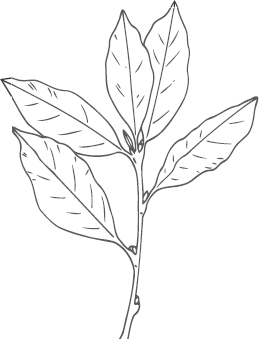

The Plant
“Sweet bay” is a small evergreen tree. The most pleasing and commonly used variety is Laurus nobilis.
The Flavor
Bay leaves’ fragrance nearly matches their flavor in strength. Both are pungent, somewhat peppery, with barely a tinge of bitterness.
Growing Needs
These semi-hardy little trees grow slowly and can be tricky to root; it’s best to buy them as potted plants.
Grow them outdoors in filtered sun and in soil that drains well. Let the ground dry out a bit between waterings. Fertilize them occasionally.
Bring the plants in before frost and place them in a window with bright light, but with no direct, or with only minimal, sun.
Harvesting
Pull off a leaf whenever you need it. There’s no reason to dry the leaves unless you cannot have access to a plant year-round.
These are hardy plants that do well in sunlight, whether indoors or out. Because of the leaves’ heartiness, drying and storing them is less necessary than with many other herbs.
But if you choose to dry the leaves, clip the branches and hang them in a dark, dry place. When the leaves are fully dried, carefully pull them off the stems and store them in airtight containers.
Culinary Suggestions
Cook bay with meat and seafood; add it to stuffings, soups, and stews; stir crushed bay into bread doughs; drop whole leaves into puddings and custards.
Bay is usually a basic ingredient in bouquet garnis; when used in that way, the leaves are crumbled. Otherwise the leaves are most often used whole.
Distinguishing Qualities
Bay’s fragrance and flavor usually reach their peak three to six days after the leaves are picked. The natural oils concentrate during that time.
Bay stems can be shaped into decorative and functional wreaths. Hung in the kitchen, such a wreath offers the cook easy access to dried bay leaves.

Tips
Remove whole bay leaves from the cooking pot before serving the dish. The leaves do not soften with cooking and can catch in or scratch diners’ throats. (It is safest to put crumbled bay leaves in a muslin bag before adding them to a roast or stew, for the same reason.)
Add bay leaves at the beginning of your cooking, baking, or roasting (in contrast to many other herbs which lose much of their flavor when heated).
Fresh leaves are beautiful as a garnish.
Place a dried bay leaf in your jar of dried rice to give flavor to the rice.